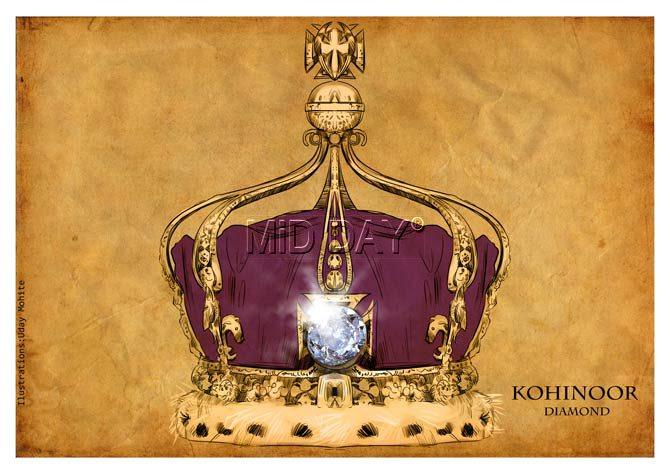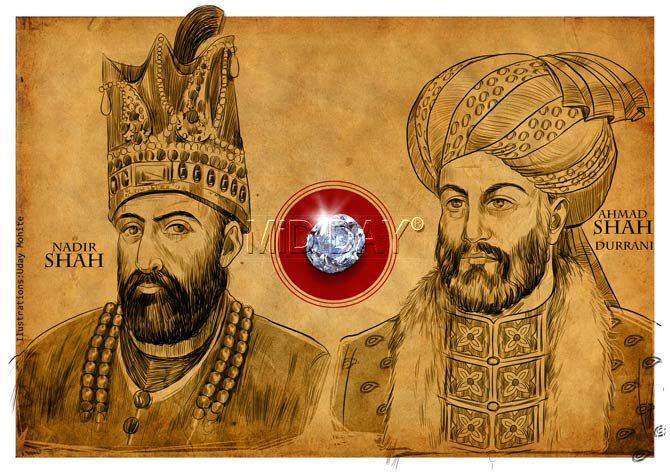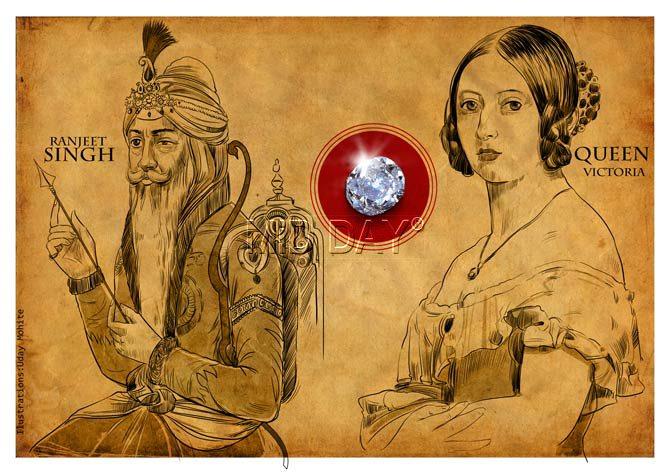The Kohinoor diamond has been making the headlines recently. With the diamond capturing the attention of the nation, we look back at the history of the Kohinoor

The Kohinoor diamond has been in the news for various reasons. Recently, the Centre told the Supreme Court that the British East India Company did not take away the Kohinoor diamond, but it was gifted to Britain by Maharaja Duleep Singh.

ADVERTISEMENT
With the diamond capturing the attention of the nation, we look back at the history of the Kohinoor.
Allaudin Khilji
Up until 1304 the diamond was in the possession of the Rajas of Malwa, but back then, the diamond was still not named Kohinoor. In 1304, it belonged to the Emperor of Delhi, Allaudin Khilji.

Curse on the diamond
In 1306, in a Hindi writing, a curse is placed on the men who will wear the diamond: “He who owns this diamond will own the world, but will also know all its misfortunes. Only God, or a woman, can wear it with impunity.”
In 1339, the diamond was taken back to the city of Samarkand, where it stayed for almost 300 years.
Babur
It remained in the Khilji dynasty and later passed to the succeeding dynasties of the Delhi Sultanate, until it came into the possession of Babur, who invaded India and established the Mughal Empire in 1526.

Nadir Shah
The Persian general Nadir Shah went to India and invaded Delhi in 1739. It was he the one that gave the diamond its current name, Koh-i-noor, which means 'Mountain of light'.
Ahmed Shah Durrani
After the assassination of Nadir Shah in 1747 and the collapse of his empire, the stone came into the hands of one of his generals, Ahmad Shah Durrani. It was later worn by Ahmed Shah's descendent Shuja who gave it to the founder of the Sikh Empire, Maharaja Ranjit Singh, in return for his hospitality.

Queen Victoria
In 1849, after the conquest by the British forces, the properties of the Sikh Empire were confiscated. Ranjit Singh was succeeded by his son Duleep Singh. Duleep Singh was only eight years when he ascended the throne. and it was believed that the Kohinoor was never a gift as a minor cannot gift it to the East India Company. The Koh-i-noor was then transferred to the treasury of the British East India Company in Lahore. Queen Victoria wore the diamond occasionally afterwards. She left in her will that the Koh-i-noor should only be worn by a female queen. If the head of state was a man, his wife would have to carry the diamond. After Queen Victoria’s death, the Koh-i-noor became part of the Crown Jewels.
 Subscribe today by clicking the link and stay updated with the latest news!" Click here!
Subscribe today by clicking the link and stay updated with the latest news!" Click here!







